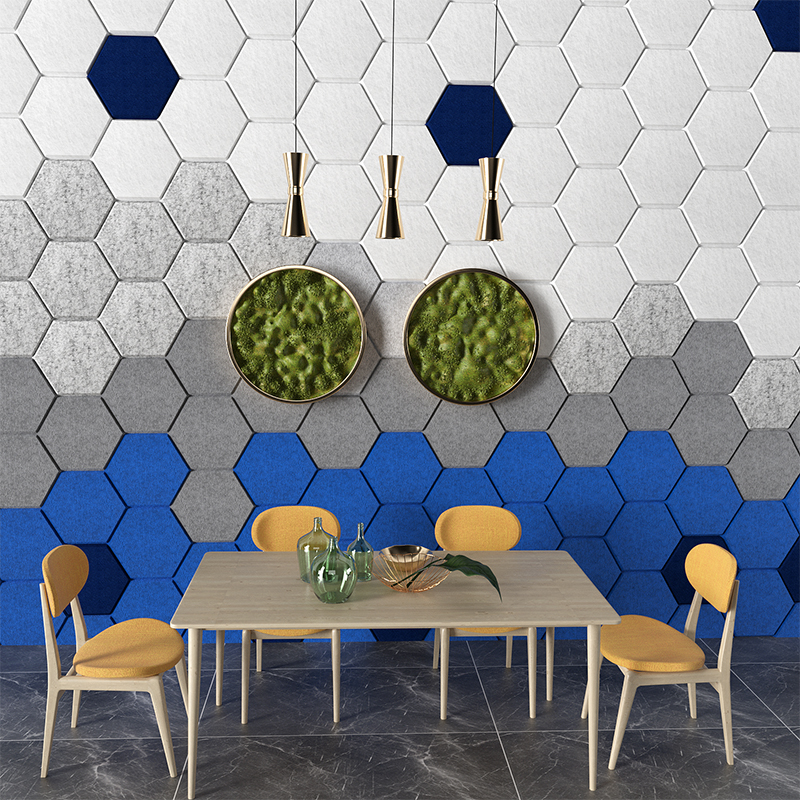1. PET Acoustic Panels: Typical Sound Absorption Coefficients
The sound absorption coefficient (α) of PET (polyester fiber) panels typically ranges between 0.6–1.0 across frequencies, depending on thickness, density, and surface treatment.
For example, in tests compliant with ENISO 354:2003 (type E mounting), a common PET panel achieves an average α of 0.7 (100-5000Hz) and a noise reduction coefficient (NRC) of 0.8, meeting Class B per ENISO 11654:1997.

2. Density vs. Sound Absorption: Does a “Peak” Exist?
Density plays a complex role:
Low density (e.g., <1350gsm): Airflow resistance is too low, reducing mid/high-frequency absorption.
Increasing density: Improves airflow resistance, enhancing absorption—especially in mid-frequencies (500-2000Hz).
Peak threshold: Beyond ~2200gsm, increased density shows diminishing returns. The relationship plateaus due to limited pore connectivity and excessive material compaction.
Practical Insight:
In PET panels with densities between 1350–2200gsm, the absorption coefficient variation is minimal (<5%). This suggests that once structural integrity is achieved, further density increases may not justify cost or weight tradeoffs.
3. Testing Principles: How Are These Values Measured?
Key standards for PET panels:
ENISO 354:2003: Measures absorption in a reverberation chamber (Type E mounting simulates wall/ceiling installations).
ENISO 11654:1997: Calculates NRC by averaging α at 250Hz, 500Hz, 1kHz, and 2kHz.
Why It Matters:
These standards ensure comparability across products. Always check if a supplier provides third-party test reports!
4. Real-World Implications
For architects/designers: Focus on panel thickness and surface perforation design (larger/more pinholes → better high-frequency absorption).
For installers: Density matters less once within the 1350–2200gsm range—prioritize fire ratings or aesthetics.
“If you’re curious about PET panel testing data or want to dive deeper, our team published a full technical report here with detailed NRC/α curves across densities. Feel free to DM for specific scenarios!”

